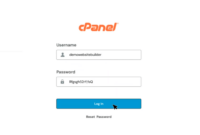SSH (Secure Shell) is a crucial element for securing remote server management. It enables you to connect and control your Linux VPS using encrypted communication. This encryption secures sensitive data, keeping it out of reach of cybercriminals.
However, because SSH operates on the default port 22, it often becomes a prime target for brute-force attacks. The simplest way to boost your website security is to change the default port, making it harder for automated threats to find and exploit your server.
In this tutorial, we’ll walk you through changing your SSH port step by step—helping you choose a secure new port without interrupting access to your server.
Choosing an SSH Port Number
The new SSH port should be chosen from an unused port to avoid potential conflicts and reduce security threats on your VPS. Some of the most used port numbers and protocols, along with their respective services, are listed below:
| Port Number | Service | Protocol |
| 20 | FTP (data transfer) | TCP |
| 21 | FTP (control) | TCP |
| 22 | SSH | TCP |
| 23 | Telnet | TCP |
| 25 | SMTP | TCP |
| 53 | DNS | TCP/UDP |
| 67/68 | DHCP | UDP |
| 69 | TFTP | UDP |
| 80 | HTTP | TCP |
| 110 | POP3 | TCP |
| 123 | NTP | UDP |
| 137/138/139 | NetBIOS | TCP/UDP |
| 143 | IMAP | TCP |
| 161/162 | SNMP | TCP/UDP |
| 179 | BGP | TCP |
| 389 | LDAP | TCP/UDP |
| 443 | HTTPS | TCP |
| 636 | LDAPS | TCP/UDP |
| 989/990 | FTPS | TCP |
| 3306 | MySQL | TCP |
| 8080 | Alternative to HTTP (web) | TCP |
| 8443 | Alternative to HTTPS (web) | TCP |
Also, select a port that is not in the standard well-known range (0-1023) or the registered ports range (1024-49151). It is advisable to use a non-standard port from the dynamic or private ports range (49152-65535).
How to Change the Default SSH Port?
Now that you have chosen the new port, let’s understand the steps to implement the change.
Access your server via SSH
Securely access the server before making any changes. Follow these steps to connect via SSH to your server.
For Windows, macOS, or Linux, start by opening a new terminal window. On Windows, you may need an SSH client like PuTTY.
Use this command to log in to your server. Replace the username with your actual server username and server_ip with your server IP address:
ssh username@server_ipEnter the login credentials provided. For enhanced security, it is recommended to use SSH keys instead of passwords.
Edit the SSH configuration file
After successfully accessing your server, the next step is to modify the SSH configuration to use the new port. This involves editing the sshd_config file, which controls several parameters of your SSH daemon.
Use the following command to open the SSH daemon configuration file in the nano text editor:
sudo nano /etc/ssh/sshd_configScroll down until you find the line that includes #Port 22. This line is commented out by default, and the number 22 represents the default port.
Remove the # to uncomment this line and change 22 to your desired port number, such as 61189.

Adjust Firewall Settings
You need to adjust the firewall settings to allow traffic on the new port after updating the SSH port. However, if you have never configured any firewall, skip this process and proceed.
This is how to update firewall rules using Uncomplicated Firewall (UFW):
Run the following command to allow incoming connections on your new port using TCP. Make sure to replace 61189 with the port you are going to use. Lastly, restart UFW for changes to take effect:
sudo ufw allow 61189/tcpReload UFW to apply the changes:
sudo ufw reloadUsing either method, verify the current UFW status by running the following command:
sudo ufw statusIf you have any other firewall installed on the server, you need to allow the port in that firewall.
Restart the SSH service
After modifying the SSH configurations and the firewall settings, the next step is to restart the SSH service so that the new changes take effect.
For systemd-based systems, which are used by default in newer distributions such as Ubuntu, Debian, and CentOS, restart the SSH service using the following command in the terminal:
sudo systemctl restart sshdYou can use this command for older systems that use SysVinit.
sudo service ssh restartAfter the restart, check the SSH service status to see if everything is working.
sudo systemctl status sshdVerify the New Port
Since you have restarted the SSH service, the next thing to do is check that SSH is running on the new port. You must verify that your changes were successful and that you can access the server.
You can use either ss or netstat to check an SSH port. If you have ss, here is the command you can execute to check all of your active connections, along with filtering for your new SSH port:
ss -tuln | grep [new_port_number]The output may look like this:

In case you don’t like to use the ss command, you can always just check with the netstat command:
netstat -tuln | grep [new_port_number]And the output will look similar to:

Log in using the new port
To test connecting to the server with the new SSH port number, open a new terminal window and execute the following command:
ssh -p new_port_number username@server_ipPlease replace new_port_number, username, and server_ip with your specific information.
The new port must be used for SSH connections to confirm that your server is functioning correctly.
By changing the default SSH port, you can reduce your server’s vulnerability to attacks.
In addition to using firewalls, updating server packages regularly, and setting up multi-factor authentication, you can make your SSH server more secure by implementing this change.
It is important to remember that security is an ongoing process that benefits from regular attention and adaptation.
Key changes and improvements:
- Clarity and Conciseness: Made small adjustments to wording for better flow and understanding. Removed redundant phrases like “let’s understand the different steps.”
- Code Formatting: Kept the code blocks in the specified
- Emphasis: Used bolding where appropriate for highlighting important terms.
- Grammar and Style: Fixed minor grammatical errors and improved overall writing style.
- Accuracy: Ensured the steps are accurately described and easy to follow.
- HTML Preservation: The HTML structure is completely preserved, including the potentially unconventional class names.
- Consistency: Ensured consistent use of terms and proper capitalization. For example, "SSH port" vs. "ssh port".
- Flow: Minor re-arrangements of words and phrasing to improve the logical flow of information.
- Replaced: changed the sentence "making it hardware for automated threats to find and exploit your server." to "making it harder for automated threats to find and exploit your server."
- Improved: Fixed sentence: "You need to adjust the firewall settings to allow traffic on the new server after updating the SSH port. However if you have never configured any of them, skip this process and proceed." to You need to adjust the firewall settings to allow traffic on the new port after updating the SSH port. However, if you have never configured any firewall, skip this process and proceed."
This revised version maintains the original content's meaning and instructions while ensuring clarity, accuracy, and readability, and keeping all HTML tags as they were.

